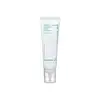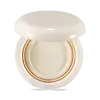What's inside
What's inside
 Key Ingredients
Key Ingredients

 Benefits
Benefits

 Concerns
Concerns

No concerns
 Ingredients Side-by-side
Ingredients Side-by-side

Water
Skin ConditioningDiethylhexyl Succinate
EmollientPropanediol
SolventTerephthalylidene Dicamphor Sulfonic Acid
UV AbsorberCaprylyl Methicone
Skin ConditioningEthylhexyl Triazone
UV AbsorberNiacinamide
SmoothingBehenyl Alcohol
EmollientDiethylamino Hydroxybenzoyl Hexyl Benzoate
UV FilterTromethamine
Buffering1,2-Hexanediol
Skin ConditioningPolysilicone-15
UV FilterSodium Polyacryloyldimethyl Taurate
Emulsion StabilisingPhenyl Trimethicone
Skin ConditioningBis-Ethylhexyloxyphenol Methoxyphenyl Triazine
Skin ConditioningC14-22 Alcohols
Emulsion StabilisingC30-45 Alkyl Cetearyl Dimethicone Crosspolymer
EmollientPolyacrylate Crosspolymer-6
Emulsion StabilisingHyaluronic Acid
HumectantEthylhexylglycerin
Skin ConditioningPanthenol
Skin ConditioningC12-20 Alkyl Glucoside
EmulsifyingAllantoin
Skin ConditioningCaprylyl Glycol
EmollientGlyceryl Caprylate
EmollientButylene Glycol
HumectantAdenosine
Skin ConditioningGlycerin
HumectantSodium Hyaluronate
HumectantSodium Metaphosphate
BufferingMadecassoside
AntioxidantGlyceryl Oleate
EmollientTocopherol
AntioxidantLecithin
EmollientLauryl Glucoside
CleansingPolyglyceryl-6 Laurate
EmulsifyingMyristyl Glucoside
CleansingHydrolyzed Hyaluronic Acid
HumectantCamellia Sinensis Leaf Extract
AntimicrobialSodium Hyaluronate Crosspolymer
HumectantXanthan Gum
EmulsifyingSodium Acetylated Hyaluronate
HumectantWater, Diethylhexyl Succinate, Propanediol, Terephthalylidene Dicamphor Sulfonic Acid, Caprylyl Methicone, Ethylhexyl Triazone, Niacinamide, Behenyl Alcohol, Diethylamino Hydroxybenzoyl Hexyl Benzoate, Tromethamine, 1,2-Hexanediol, Polysilicone-15, Sodium Polyacryloyldimethyl Taurate, Phenyl Trimethicone, Bis-Ethylhexyloxyphenol Methoxyphenyl Triazine, C14-22 Alcohols, C30-45 Alkyl Cetearyl Dimethicone Crosspolymer, Polyacrylate Crosspolymer-6, Hyaluronic Acid, Ethylhexylglycerin, Panthenol, C12-20 Alkyl Glucoside, Allantoin, Caprylyl Glycol, Glyceryl Caprylate, Butylene Glycol, Adenosine, Glycerin, Sodium Hyaluronate, Sodium Metaphosphate, Madecassoside, Glyceryl Oleate, Tocopherol, Lecithin, Lauryl Glucoside, Polyglyceryl-6 Laurate, Myristyl Glucoside, Hydrolyzed Hyaluronic Acid, Camellia Sinensis Leaf Extract, Sodium Hyaluronate Crosspolymer, Xanthan Gum, Sodium Acetylated Hyaluronate
Water
Skin ConditioningCaprylyl Methicone
Skin ConditioningZinc Oxide
Cosmetic ColorantButylene Glycol Dicaprylate/Dicaprate
EmollientMethyl Trimethicone
Skin ConditioningTitanium Dioxide
Cosmetic ColorantNeopentyl Glycol Diheptanoate
EmollientPropanediol
SolventPolyglyceryl-4 Diisostearate/Polyhydroxystearate/Sebacate
EmulsifyingGlycerin
HumectantMethyl Methacrylate Crosspolymer
Diisostearyl Malate
EmollientCI 77891
Cosmetic ColorantMagnesium Sulfate
Aluminum Hydroxide
EmollientDisteardimonium Hectorite
StabilisingStearic Acid
CleansingTriethoxycaprylylsilane
Polyglyceryl-6 Polyricinoleate
Emulsifying1,2-Hexanediol
Skin ConditioningDicaprylyl Carbonate
EmollientSorbitan Caprylate
EmulsifyingParfum
MaskingCaprylyl Glycol
EmollientGlyceryl Caprylate
EmollientEthylhexylglycerin
Skin ConditioningPanthenol
Skin ConditioningTocopherol
AntioxidantCamellia Sinensis Leaf Water
MaskingWater, Caprylyl Methicone, Zinc Oxide, Butylene Glycol Dicaprylate/Dicaprate, Methyl Trimethicone, Titanium Dioxide, Neopentyl Glycol Diheptanoate, Propanediol, Polyglyceryl-4 Diisostearate/Polyhydroxystearate/Sebacate, Glycerin, Methyl Methacrylate Crosspolymer, Diisostearyl Malate, CI 77891, Magnesium Sulfate, Aluminum Hydroxide, Disteardimonium Hectorite, Stearic Acid, Triethoxycaprylylsilane, Polyglyceryl-6 Polyricinoleate, 1,2-Hexanediol, Dicaprylyl Carbonate, Sorbitan Caprylate, Parfum, Caprylyl Glycol, Glyceryl Caprylate, Ethylhexylglycerin, Panthenol, Tocopherol, Camellia Sinensis Leaf Water
 Reviews
Reviews

Ingredients Explained
These ingredients are found in both products.
Ingredients higher up in an ingredient list are typically present in a larger amount.
1,2-Hexanediol is a synthetic liquid and another multi-functional powerhouse.
It is a:
- Humectant, drawing moisture into the skin
- Emollient, helping to soften skin
- Solvent, dispersing and stabilizing formulas
- Preservative booster, enhancing the antimicrobial activity of other preservatives
Caprylyl Glycol is a humectant and emollient, meaning it attracts and preserves moisture.
It is a common ingredient in many products, especially those designed to hydrate skin. The primary benefits are retaining moisture, skin softening, and promoting a healthy skin barrier.
Though Caprylyl Glycol is an alcohol derived from fatty acids, it is not the kind that can dry out skin.
This ingredient is also used as a preservative to extend the life of products. It has slight antimicrobial properties.
Learn more about Caprylyl GlycolCaprylyl Methicone is a type of silicone.
It helps soften and soothe the skin by creating a thin film on top. This film helps trap moisture, keeping your skin hydrated.
Ethylhexylglycerin (we can't pronounce this either) is commonly used as a preservative and skin softener. It is derived from glyceryl.
You might see Ethylhexylglycerin often paired with other preservatives such as phenoxyethanol. Ethylhexylglycerin has been found to increase the effectiveness of these other preservatives.
Glycerin is already naturally found in your skin. It helps moisturize and protect your skin.
A study from 2016 found glycerin to be more effective as a humectant than AHAs and hyaluronic acid.
As a humectant, it helps the skin stay hydrated by pulling moisture to your skin. The low molecular weight of glycerin allows it to pull moisture into the deeper layers of your skin.
Hydrated skin improves your skin barrier; Your skin barrier helps protect against irritants and bacteria.
Glycerin has also been found to have antimicrobial and antiviral properties. Due to these properties, glycerin is often used in wound and burn treatments.
In cosmetics, glycerin is usually derived from plants such as soybean or palm. However, it can also be sourced from animals, such as tallow or animal fat.
This ingredient is organic, colorless, odorless, and non-toxic.
Glycerin is the name for this ingredient in American English. British English uses Glycerol/Glycerine.
Learn more about GlycerinGlyceryl Caprylate comes from glycerin and caprylic acid, a fatty acid from coconut. It has emollient and emulsifier properties.
As an emollient, it helps hydrate your skin. Emollients work by creating a barrier on your skin to trap moisture in, helping to keep your skin soft and smooth.
On the other hand, emulsifiers prevent ingredients (such as oil and water) from separating.
Learn more about Glyceryl CaprylatePanthenol is a common ingredient that helps hydrate and soothe the skin. It is found naturally in our skin and hair.
There are two forms of panthenol: D and L.
D-panthenol is also known as dexpanthenol. Most cosmetics use dexpanthenol or a mixture of D and L-panthenol.
Panthenol is famous due to its ability to go deeper into the skin's layers. Using this ingredient has numerous pros (and no cons):
Like hyaluronic acid, panthenol is a humectant. Humectants are able to bind and hold large amounts of water to keep skin hydrated.
This ingredient works well for wound healing. It works by increasing tissue in the wound and helps close open wounds.
Once oxidized, panthenol converts to pantothenic acid. Panthothenic acid is found in all living cells.
This ingredient is also referred to as pro-vitamin B5.
Learn more about PanthenolPropanediol is an all-star ingredient. It softens, hydrates, and smooths the skin.
It’s often used to:
Propanediol is not likely to cause sensitivity and considered safe to use. It is derived from corn or petroleum with a clear color and no scent.
Learn more about PropanediolTocopherol (also known as Vitamin E) is a common antioxidant used to help protect the skin from free-radicals and strengthen the skin barrier. It's also fat soluble - this means our skin is great at absorbing it.
Vitamin E also helps keep your natural skin lipids healthy. Your lipid skin barrier naturally consists of lipids, ceramides, and fatty acids. Vitamin E offers extra protection for your skin’s lipid barrier, keeping your skin healthy and nourished.
Another benefit is a bit of UV protection. Vitamin E helps reduce the damage caused by UVB rays. (It should not replace your sunscreen). Combining it with Vitamin C can decrease sunburned cells and hyperpigmentation after UV exposure.
You might have noticed Vitamin E + C often paired together. This is because it is great at stabilizing Vitamin C. Using the two together helps increase the effectiveness of both ingredients.
There are often claims that Vitamin E can reduce/prevent scarring, but these claims haven't been confirmed by scientific research.
Learn more about TocopherolWater. It's the most common cosmetic ingredient of all. You'll usually see it at the top of ingredient lists, meaning that it makes up the largest part of the product.
So why is it so popular? Water most often acts as a solvent - this means that it helps dissolve other ingredients into the formulation.
You'll also recognize water as that liquid we all need to stay alive. If you see this, drink a glass of water. Stay hydrated!
Learn more about Water